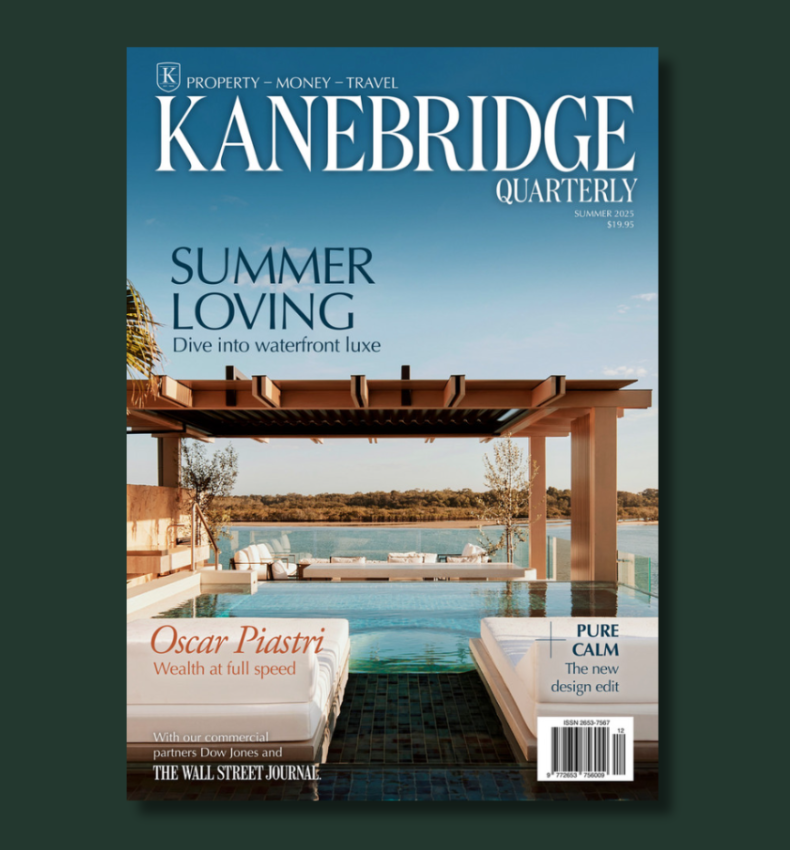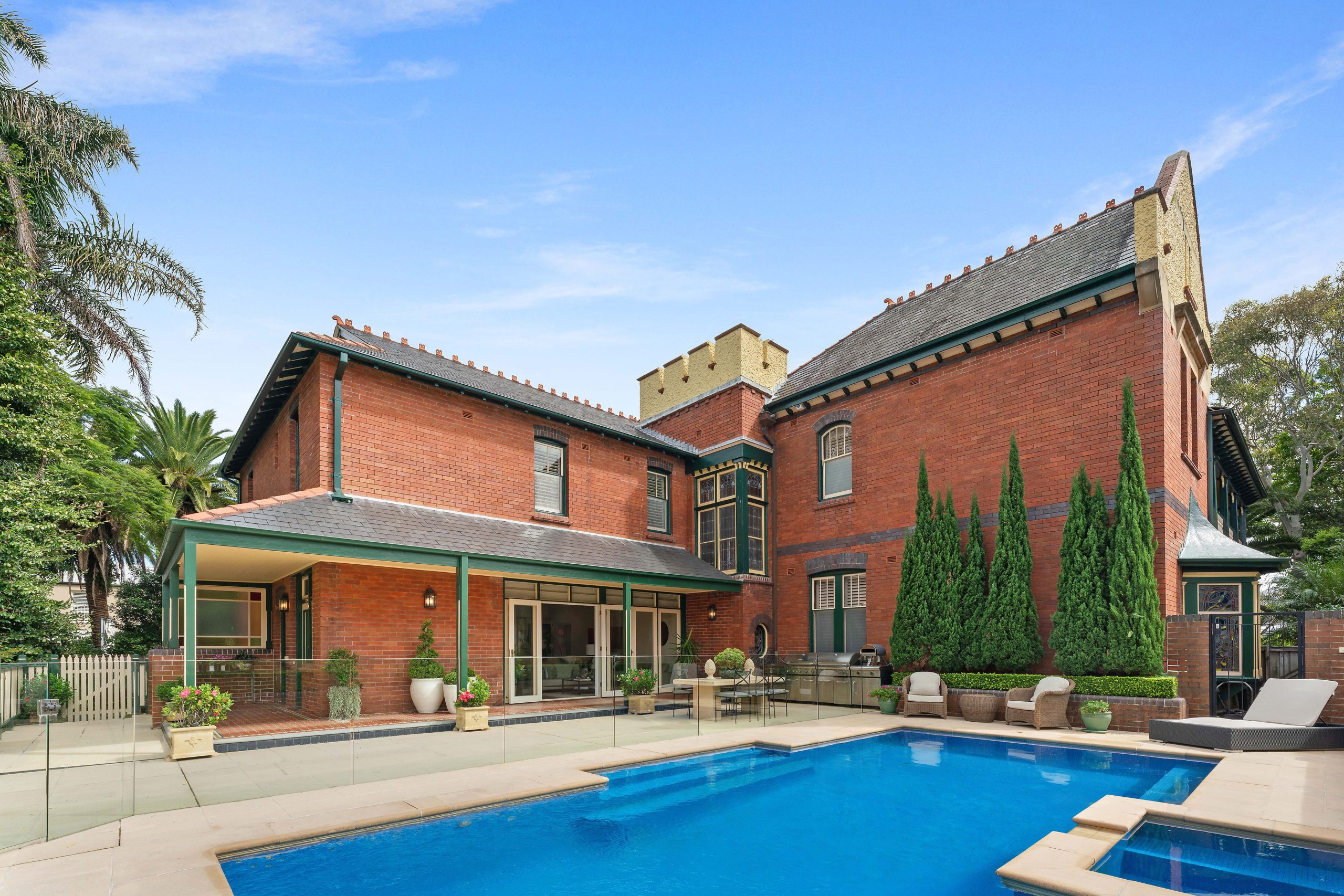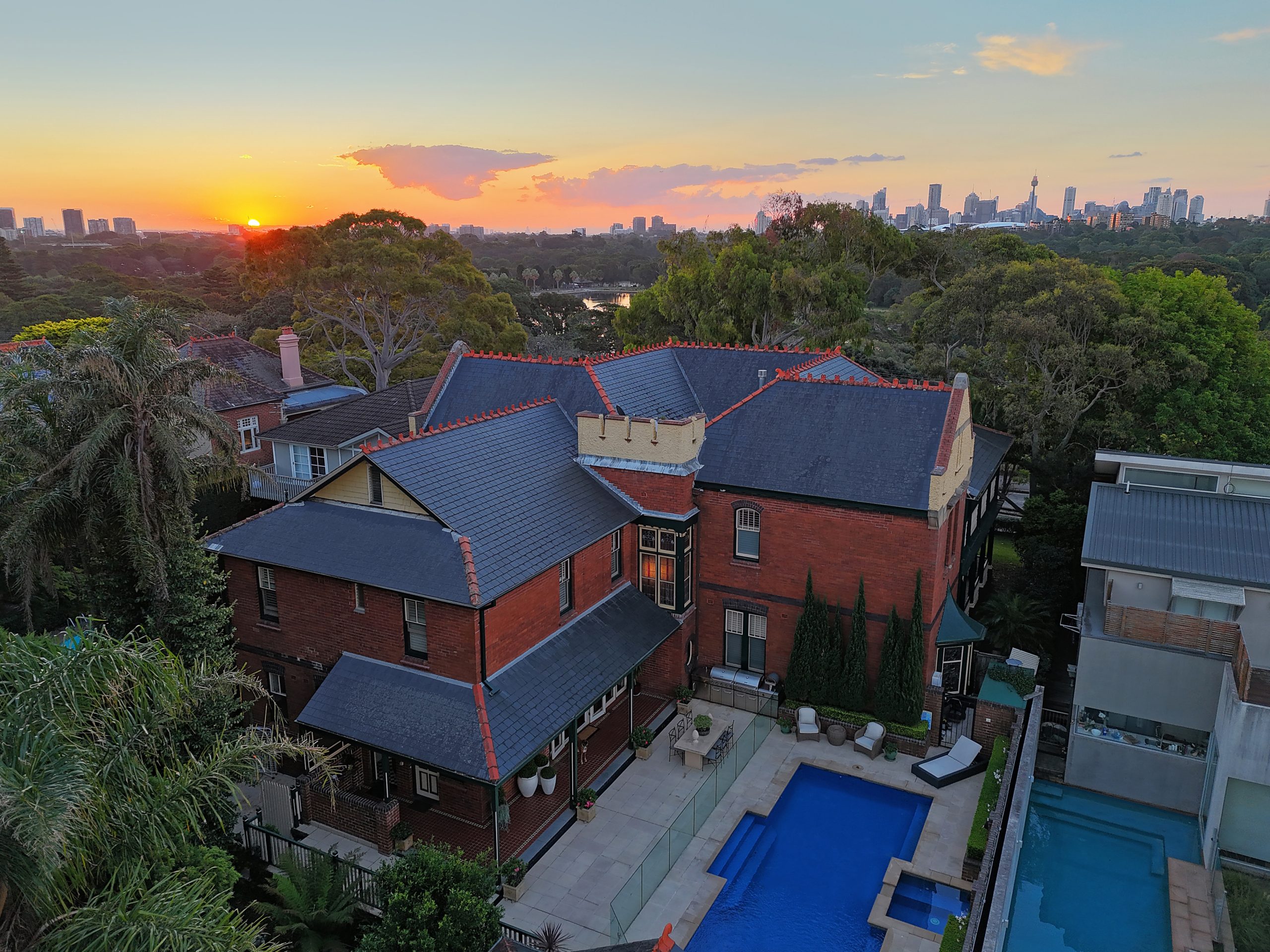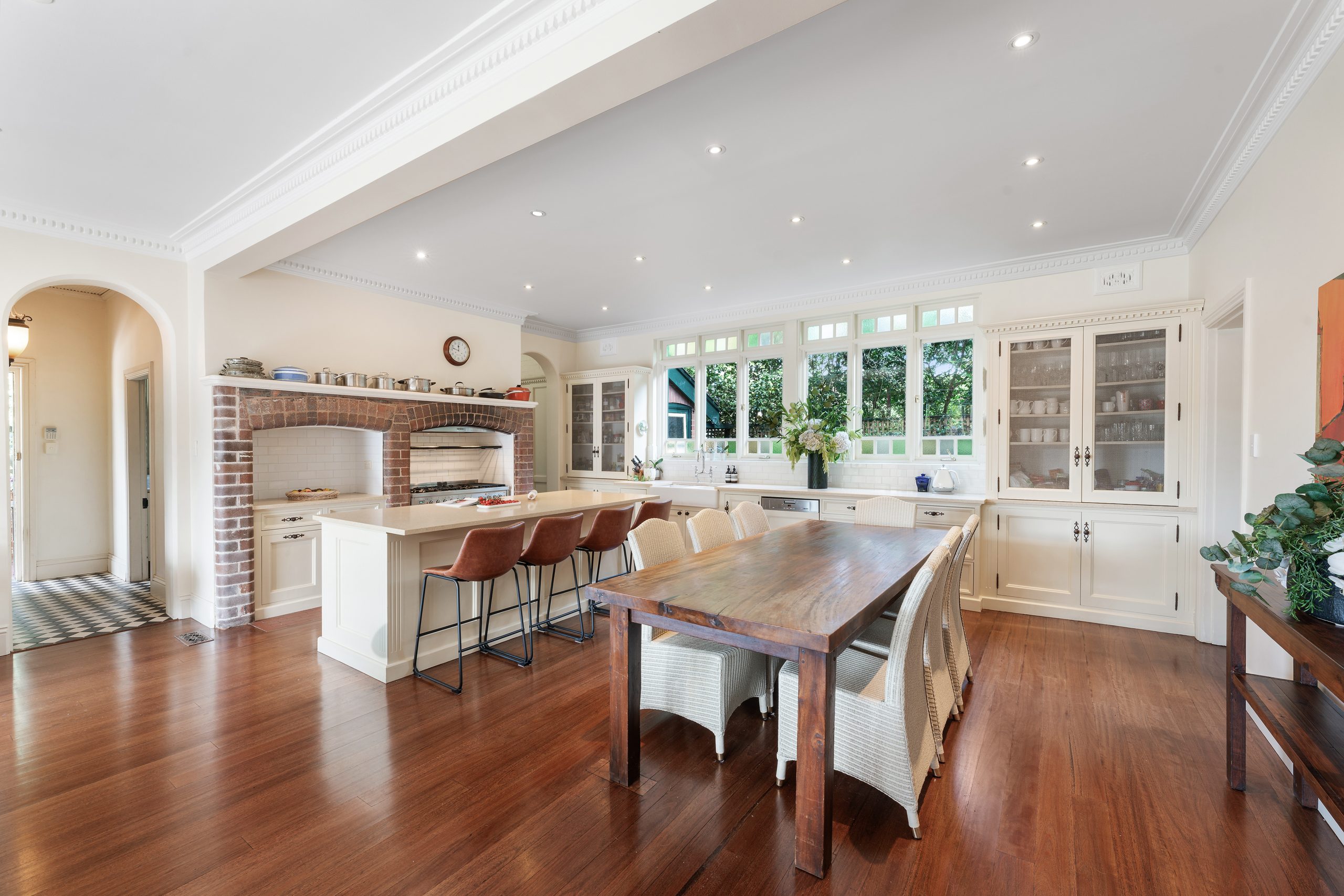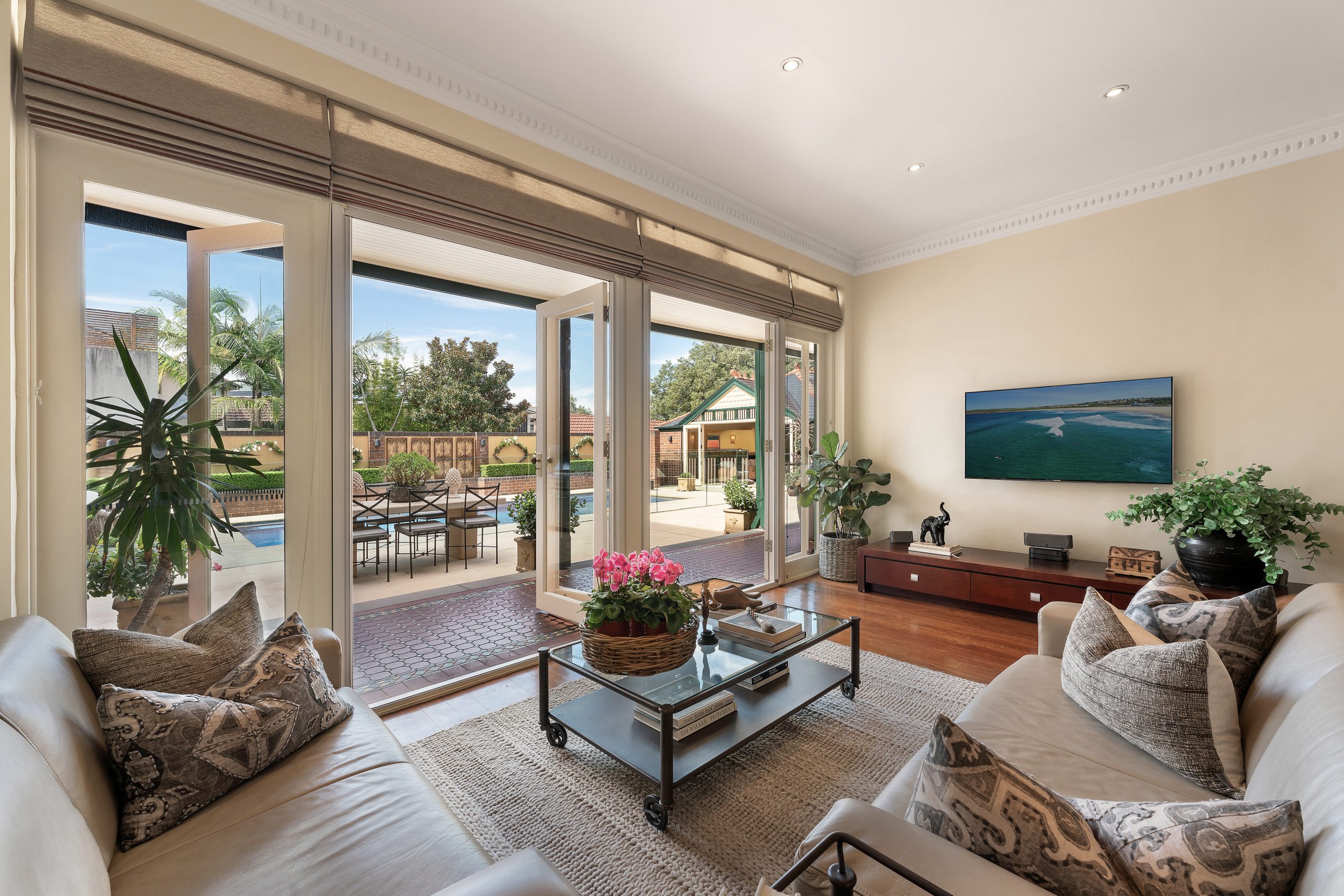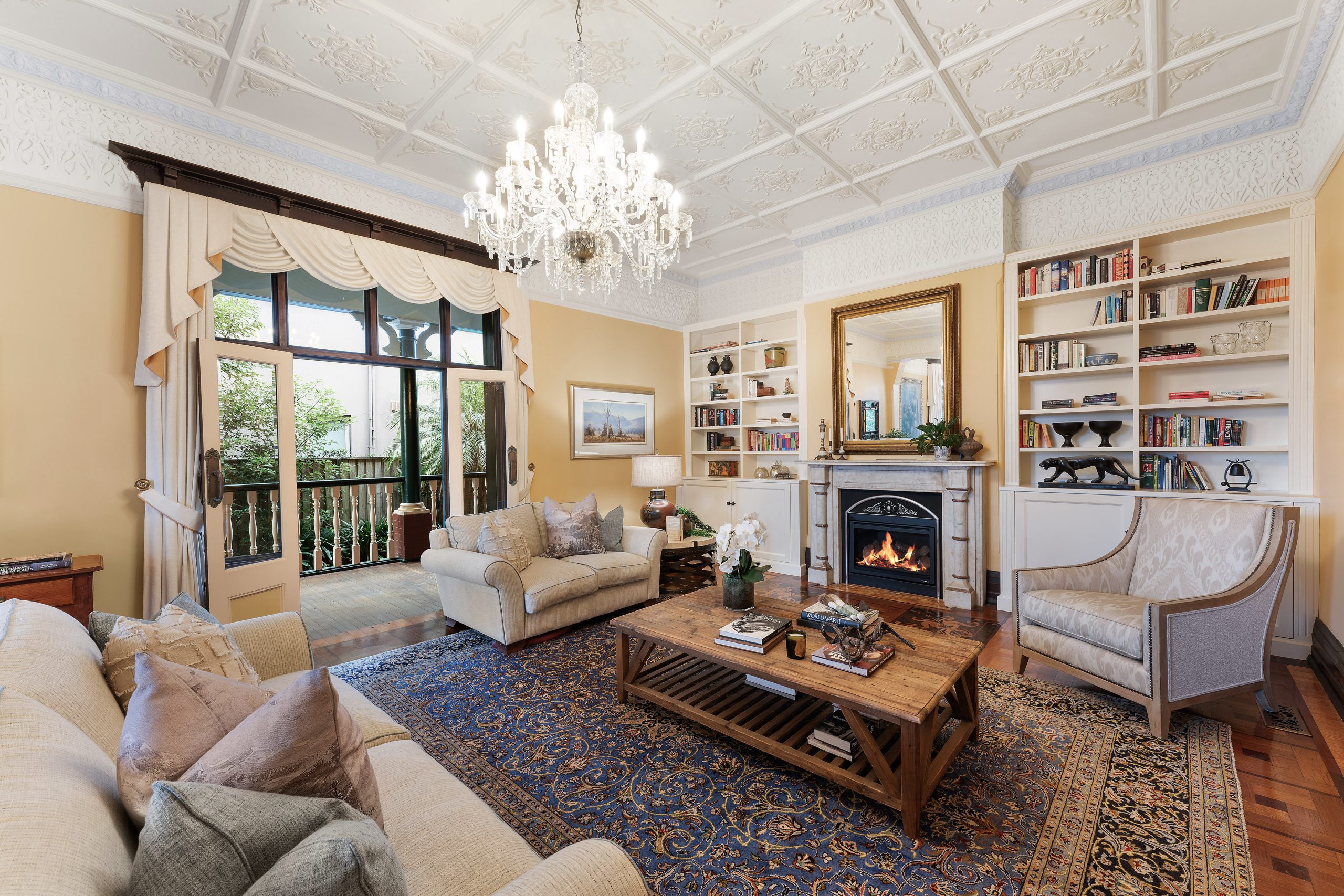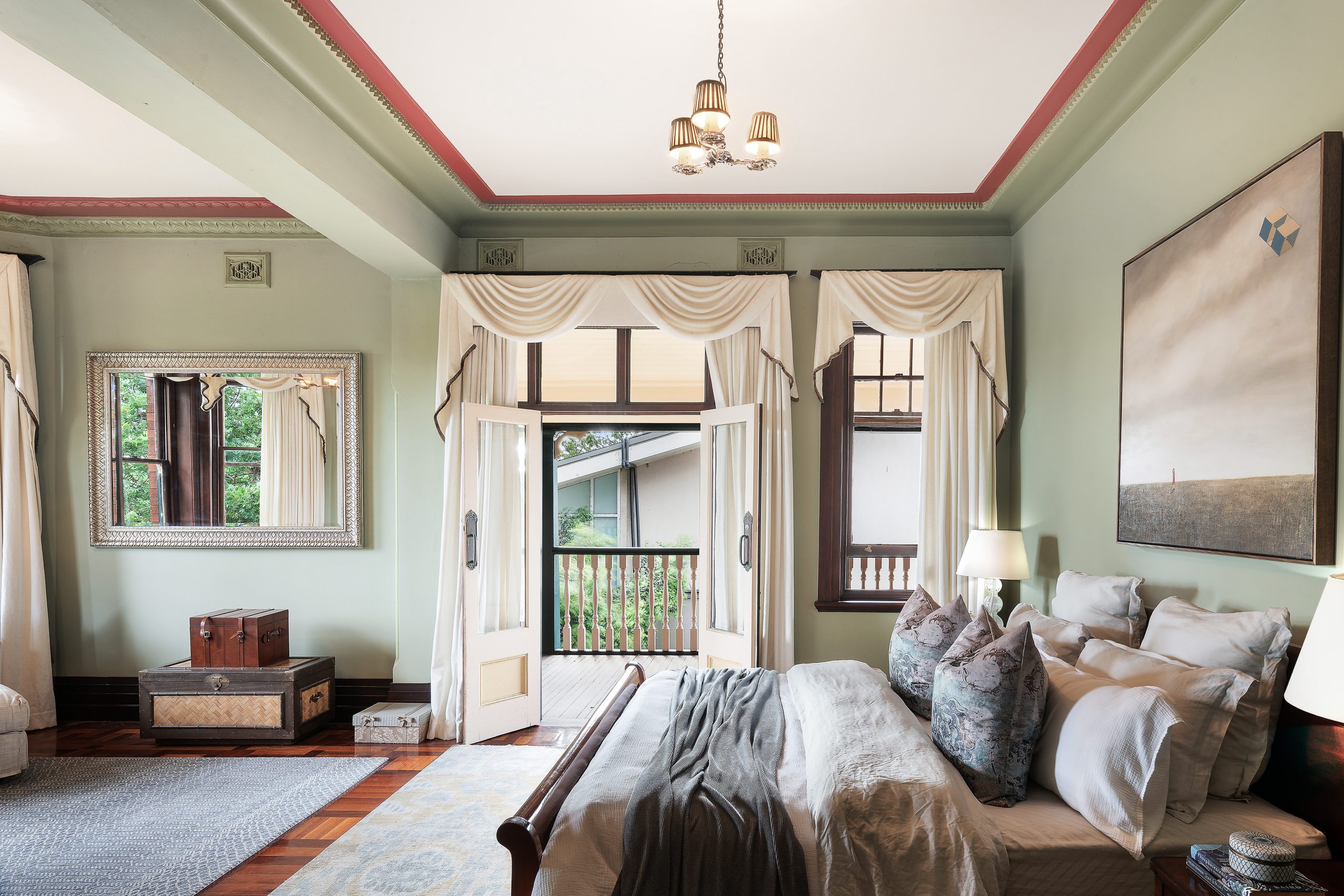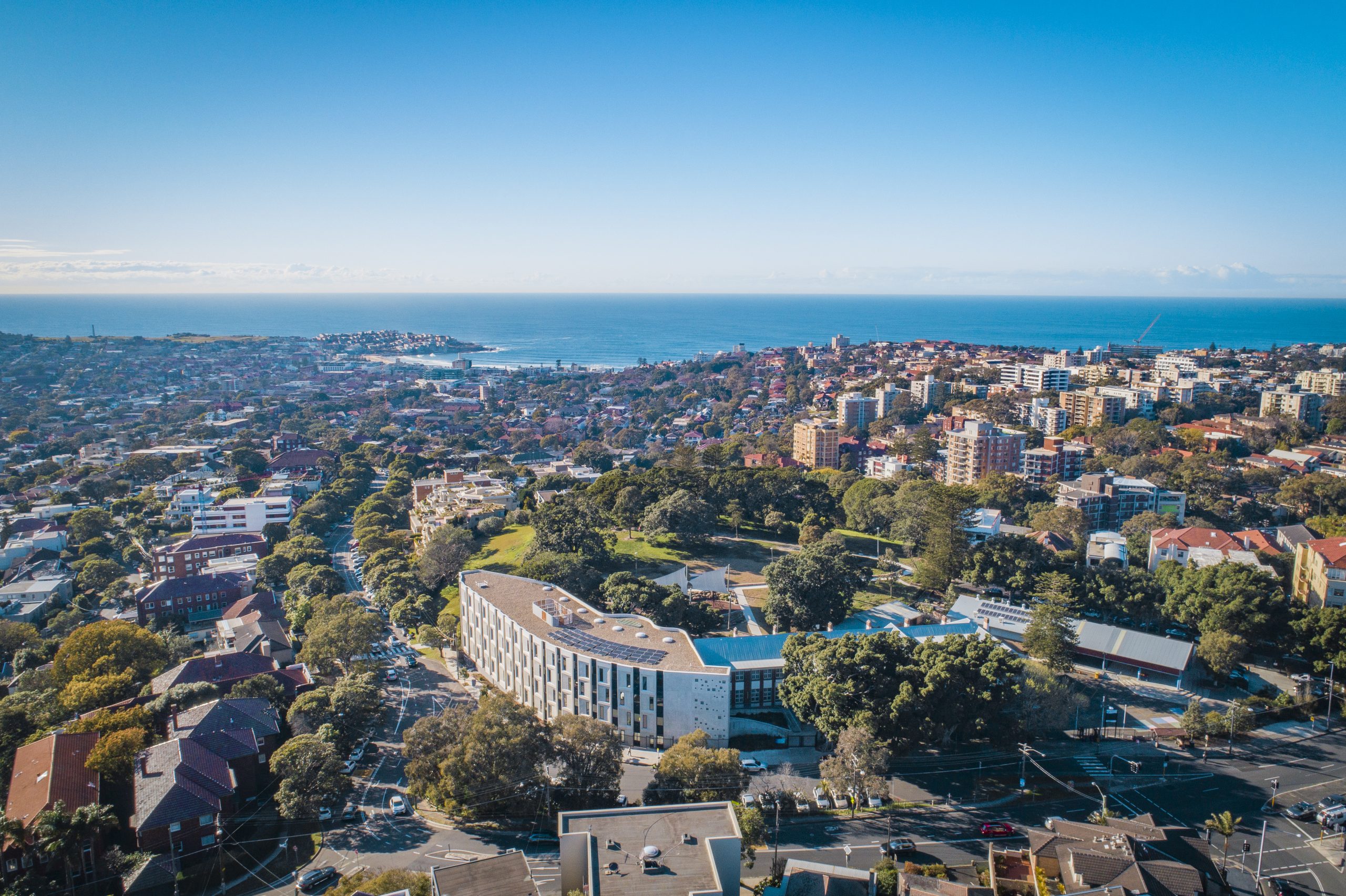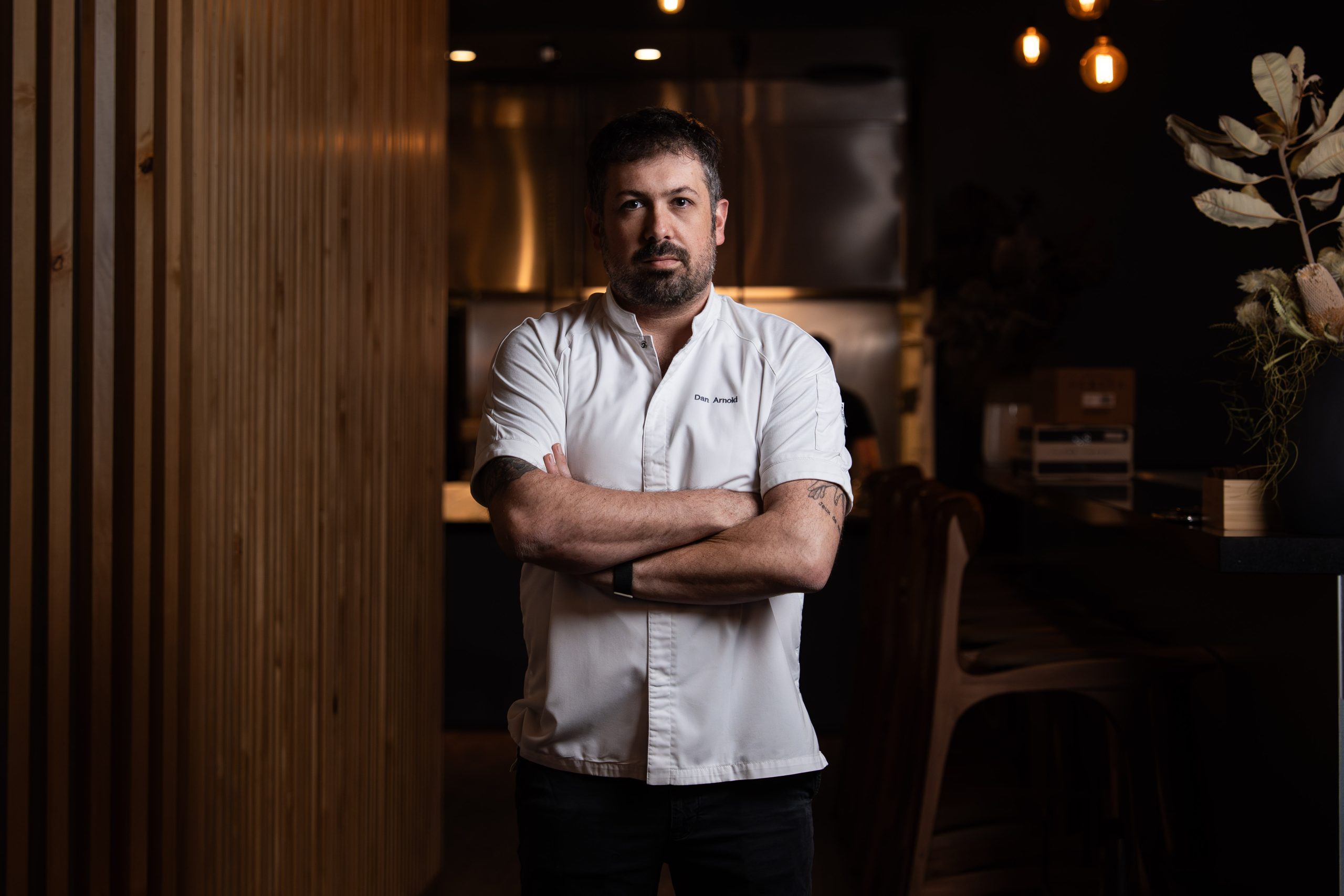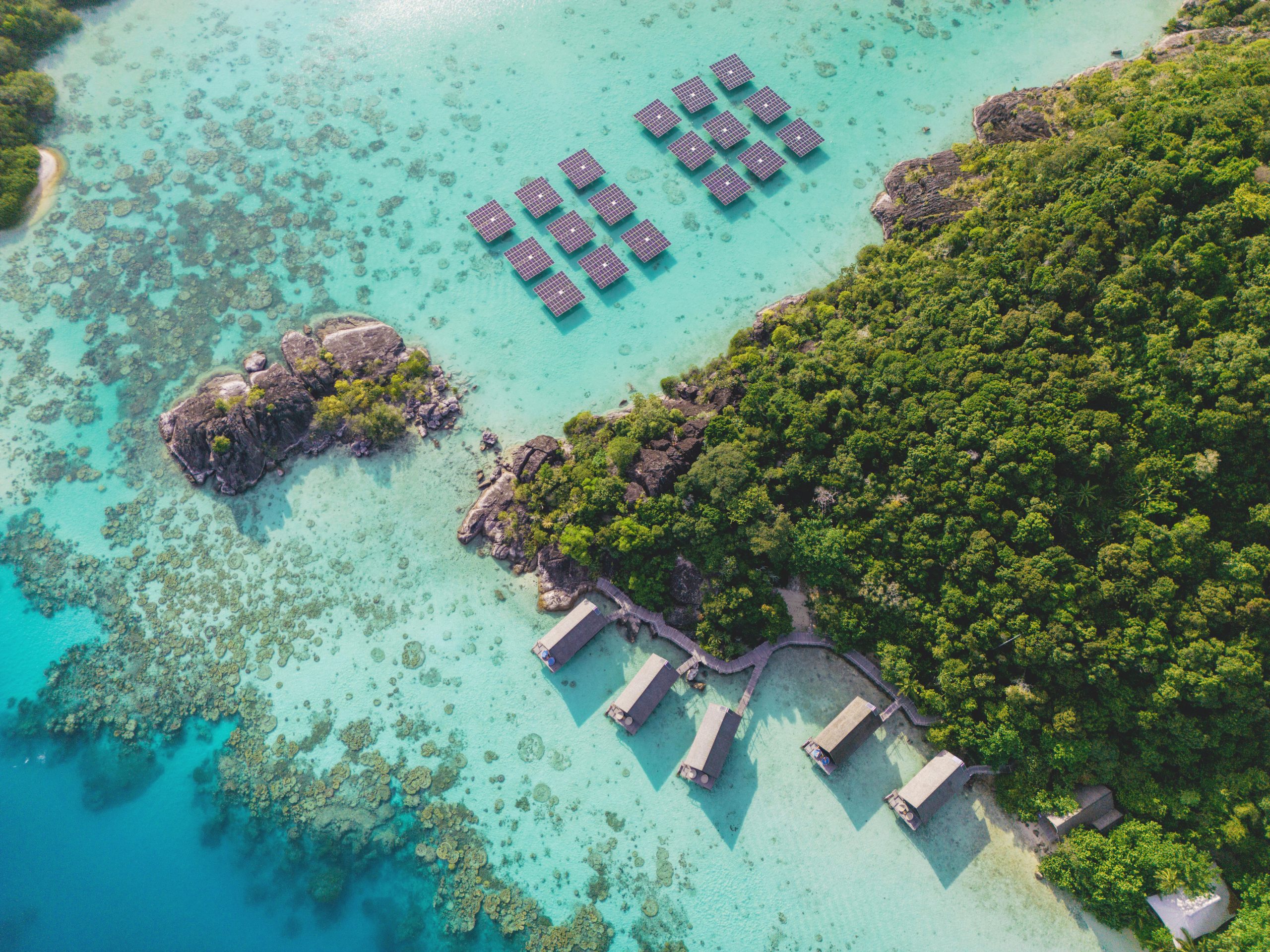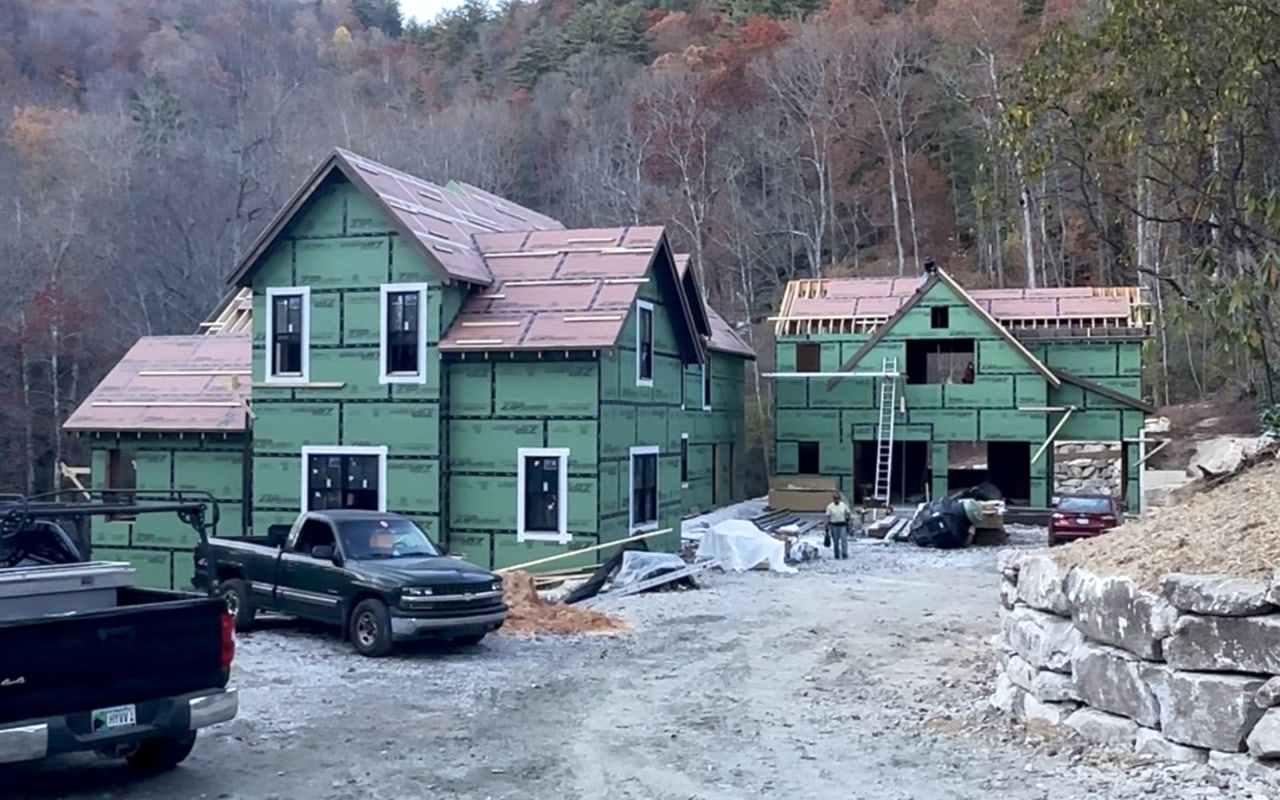Salute to a Randwick Icon
Randwick’s Swan Isle is a meticulously restored heritage estate. With a $14 million guide, the palatial residence blends Victorian grandeur with modern luxury.
As local legend has it, retired Colonel William Farrell Commanding Officer of the first infantry regiment, stood on the balcony of his new Randwick residence back in 1906 and watched his soldiers parade by, saluting his honour.
Today, more than a century later, Swan Isle itself deserves a salute as it remains one of Sydney’s most meticulously maintained heritage addresses.
The 1349sq m estate in Randwick made an appearance on the market in early 2024, at the time asking $20m – a figure that would have eclipsed the suburb price record of $14.35 million set that same year.
Ray White Double Bay’s Kate Smith, and principal Elliott Placks, have brought the palatial seven-bedroom home back to market with a new campaign and an amended guide of $14 million.
The $6 million price correction may seem significant, but the eastern suburbs’ prestige property scene evidently sets its own pace.
Just last week the period residential estate Iona in Darlinghurst – once owned by Hollywood elite Baz Luhrman and Catherine Martin – sold for top dollar after an apparent $13 million “discount”.
That heritage estate had been marketed unsuccessfully in 2024 with a $40 million guide, was then slashed to $27 million at the start of this month, but sold in just 12 days for $37.5 million.
Since Swan Isle last sold in 2002 for $2.02 million, the two-storey home at 87 – 89 Darley Rd has been lovingly restored by the current owners and retired hoteliers, Robert and Mary Lou Richards.
The Richards were the publicans of The Strand, in Darlinghurst in 1992 and the Rocksia in Rockdale between 2012 and 2020.
After Colonel Farrell and his wife Frances raised five children at the historic home, the property was later used by St Jude’s Anglican Church for monthly services.
By the mid-20th century it became a private hotel and was then returned to private hands in 1960.
Inside, the stately residence expertly balances period charm and contemporary convenience with formal and casual living rooms featuring high ornate ceilings, chandeliers, polished timber floors and intricate lead light windows.
There are also original fireplaces and bespoke joinery that has been crafted to suit the home’s Victorian past, while modern upgrades include a modern kitchen with stone surfaces, Ilve and Miele dishwasher and a butler’s pantry.
All seven bedrooms are spread across both levels, plus two of the four bathrooms have elegant freestanding tubs and dual vanities.
In addition to multiple entertainment spaces downstairs, the upper floor houses a study, media room, billiards room and several balconies capturing panoramic views of Centennial Parklands and the city skyline.
Outside, the expansive grounds are home to manicured gardens befitting the romantic era, and more 21st century inclusions such as a barbecue area, a heated swimming pool, and a self-contained pool house that doubles as a studio.
The block has dual street access with Huddart Lane and there is an automated four-car garage with ample storage.
Swan Isle is close to Royal Randwick Racecourse, Allianz Stadium, Moore Park Golf Course, the Entertainment Quarter and the SCG.
Swan Isle at 87-89 Darley Rd, Randwick is listed with Kate Smith and Elliott Placks of Ray White Double Bay. It is listed via private treaty with a $14 million price guide.
Formula 1 may be the world’s most glamorous sport, but for Oscar Piastri, it’s also one of the most lucrative. At just 24, Australia’s highest-paid athlete is earning more than US$40 million a year.
From gorilla encounters in Uganda to a reimagined Okavango retreat, Abercrombie & Kent elevates its African journeys with two spectacular lodge transformations.
Ray White senior data analyst Atom Go Tian says Sydney’s elite postcodes are pulling further ahead, with Bellevue Hill dominating the nation’s most expensive streets in 2025.
Sydney has cemented its status as the nation’s luxury capital, with Kambala Road in Bellevue Hill being Australia’s most expensive street this year, posting a median house price of $39.35 million.
And, according to Ray White senior data analyst Atom Go Tian, last year’s leader, Wolseley Road, was excluded from this year’s rankings due to limited sales.
“Wolseley Road recorded only three sales this year and was therefore excluded from the rankings, though its $51.5 million median would have otherwise retained the top position,” he says.
Bellevue Hill continues its dominance, accounting for six of the nation’s top 10 streets. Tian says the suburb’s appeal lies in its rare blend of location and lifestyle advantages.
“The suburb’s enduring appeal lies in its rare combination of proximity to both the CBD and multiple beaches, harbour views, and large estate-sized blocks on tree-lined streets.”
Vaucluse remains a powerhouse in its own right. “Vaucluse extends this harbourside premium with even more direct beach access and panoramic water views,” he says.
The gulf between Sydney and the rest of the country remains striking.
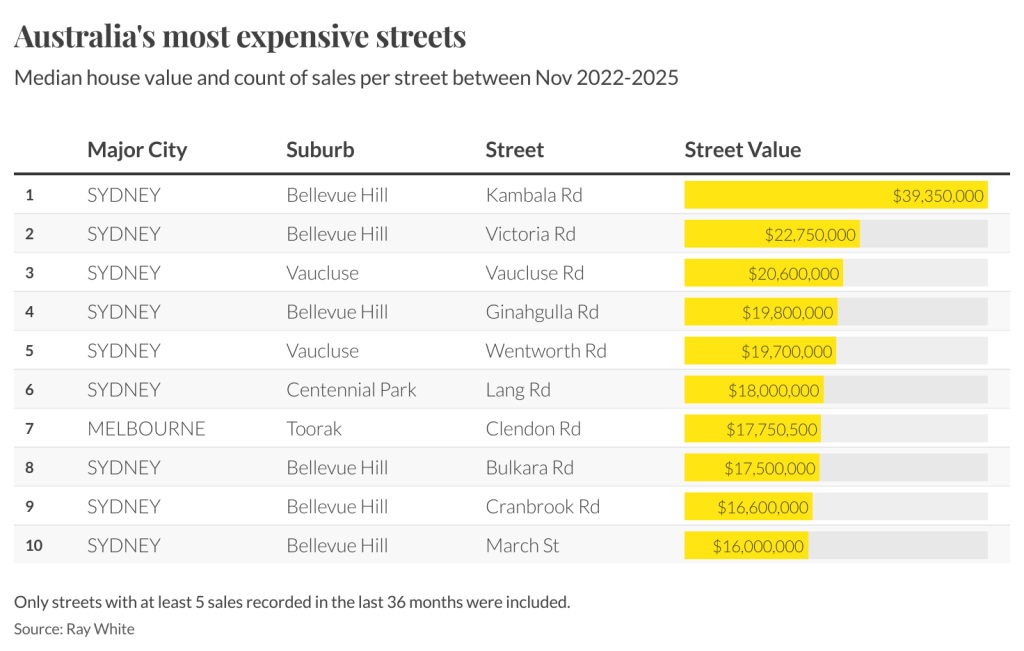
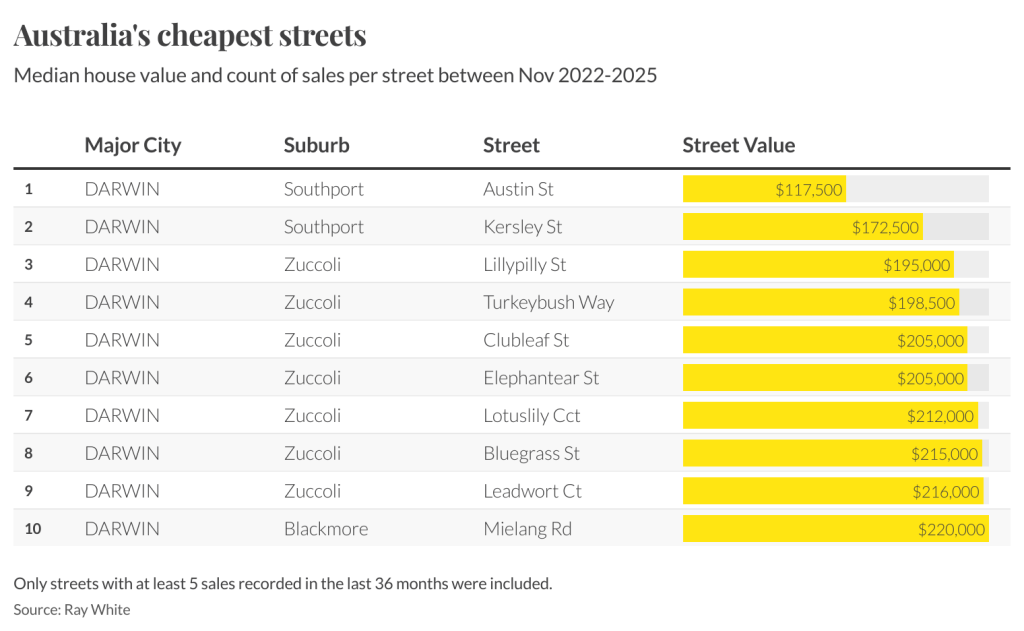
According to Tian, “Sydney’s most expensive streets are more than five times more expensive than the leading streets in Perth and Brisbane, and more than 10 times the premium streets in Canberra and Adelaide.”
He attributes this to Sydney’s economic role and geographic constraints, describing it as “Australia’s financial capital and its most internationally connected city.”
Beyond Sydney, each capital city has developed its own luxury hierarchy. Tian highlights Melbourne’s stronghold in Toorak, noting that “Melbourne’s luxury market remains centred around Toorak, led by Clendon Road, St Georges Road and Linlithgow Road.”
Brisbane’s prestige pockets are more dispersed: “Brisbane’s luxury real estate shows a more diverse pattern,” he says, led by Laidlaw Parade at $6.5 million. Perth’s top-end market remains anchored in the Peppermint Grove–Dalkeith corridor, with Forrest Street at $7.5 million.
He also points to the stark contrast at the lower end of the spectrum. “Darwin presents a mirror image, hosting all 10 of the country’s cheapest streets,” Tian says. Austin Street in Southport sits at just $117,500.
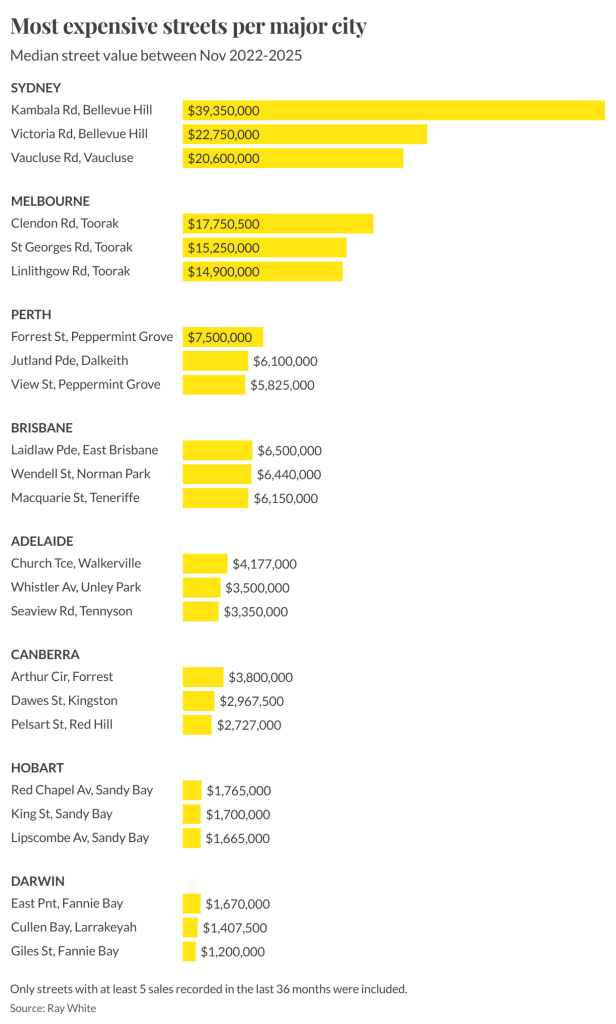

The national spread reaches its extreme in New South Wales. “Sydney emerges as the most polarised market, spanning an extraordinary range from Railway Parade in Katoomba at $385,000 to Kambala Road’s $39.35 million,” Tian says.
Methodology: Tian’s analysis examines residential house sales between November 2022 and November 2025, with only streets recording at least five sales included. Several streets with higher medians, including Black Street, Queens Avenue and Clairvaux Road in Vaucluse, were excluded because they did not meet the sales threshold.
Ophora Tallawong has launched its final release of quality apartments priced under $700,000.
By improving sluggish performance or replacing a broken screen, you can make your old iPhone feel new agai



